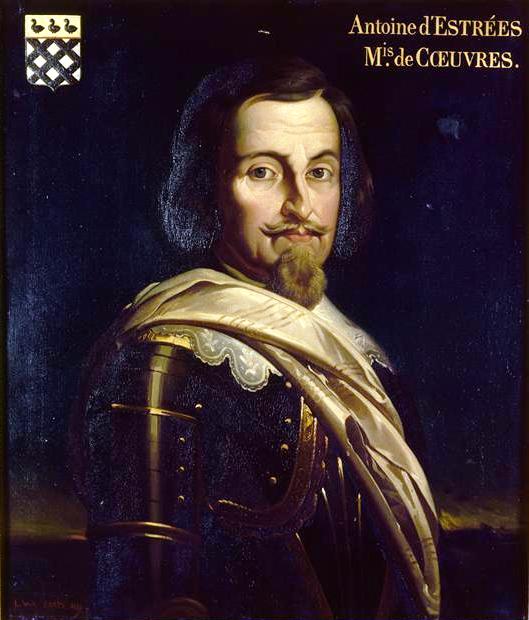Anne Henriette Julie was born on 13 March 1648 and was destined from birth to make an advantageous marriage. Her aunt (on her mother's side) was the Queen of Poland while her father was the Prince Palatine. That she would eventually be married off to a Frenchman was not surprising; her mother had been a resident of Paris for a good portion of her life.
The bridegroom chosen for the 15-year old Anne was the sole male heir to the Grande Condé: Henri Jules de Bourbon-Condé. The French royal family attended their wedding ceremony at the Louvre in December 1663. Upon her marriage Anne assumed the title of Duchesse d'Enghien; when her father-in-law died she would become the Princesse de Condé or Madame la Princesse.
Anne's marriage may have been prestigious in title but would not be an easy one. Her husband had inherited a streak of madness from his mother; today we know that he suffered from the mental illness clinical lycanthropy. This meant that he would suffer violent hallucinations - on occasion, he would direct that violence towards Anne.
 |
| Anne by Pierre Robert |
Despite being beaten by her husband - even in the presence of other people at times - Anne understood that his temper was not due to a "bad" personality. Although mental illness was not understood quite as well at the time, she did what she could to ease his sufferings. This was quickly noticed by the surrounding courtiers who recognized a genuine caring soul in Anne.
Her husband's illness did not prevent him from fulfilling his dynastic duties. Anne fell pregnant for the first time in 1666; she would have a total of ten children. Sadly, the Condés were not immune to the dangers facing infants and they lost half of theirs.
Perhaps it was due to the loss of so many of her children that she took a careful interest in their lives. When her daughter, Louise Bénédicte, fell out with her husband, the Duc du Maine, Anne brought her daughter to see her husband in an attempt to reconcile them.
She would - like her mother - reside in Paris in the Petit Luxembourg. Actually, the current Rue Palatine is named after her. She also held the Château de Raincy in her own name. According to the Duc de Saint-Simon one of her most constant companions was an unnamed dwarf. However, Saint-Simon does not leave us with a very flattering image of Madame la Princesse. He described her as ugly, foolish but virtuous. According to him no one really considered her to be important and she herself had no interest in furthering her standing at court - instead, she focused on god.
Although fashion did not take up much of her time Julien Scavini attributes the parasol's entry into fashion to Anne.
As for her looks, Saint-Simon might not have been kind to her but no one else described her as ugly. The portrait of her by Pierre Gobert at the age of 22 shows a young woman with curly, thick dark hair, equally dark eyes and a thick lower lip. Of course, the artist may have added something as a compliment but if the portrait is somewhat accurate, the description of Saint-Simon is far off.
 |
| While Duchesse d'Enghien |
It was thanks to Anne's mother that she would soon be joined at the French court by another Princess Palatine: Elizabeth Charlotte. As it happens, Anne and Elizabeth Charlotte were first cousins. The appear to have had a good relationship. Elizabeth Charlotte described her cousin as the only one in the house of Bourbon-Condé much worth anything. Madame attributed this to the portion of German blood in her cousin's veins.
Anne inherited the title of Princess d'Arches when the male line died out in 1708. Loss was not uncommon for Anne; she had already lost five children in their infancy and would lose her husband in 1709. A year later, the new Prince de Condé - her son - died as well. Over the years Anne would see the demise of another child: the Duchesse de Vendôme. Anne herself died on 23 February 1723 in Paris.







